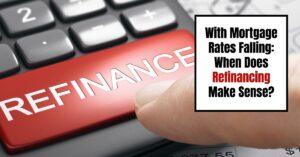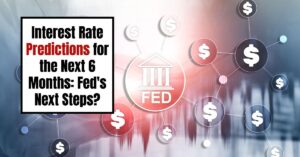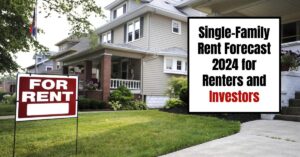The San Jose housing market just hit a staggering milestone: a median home price of $2 million. This news, while shocking, isn't entirely surprising given the trends we've been seeing in the U.S. housing market. Let's unpack what this means for San Jose and the broader implications for the real estate market.
$2 Million Homes: San Jose's Housing Market Reaches New Height
Key Takeaways:
- $2 Million Threshold: San Jose is now the first U.S. metro area to record a median single-family home price of $2 million, according to the National Association of Realtors (NAR).
- National Trend: U.S. median single-family home prices rose to $422,100, a 4.9% year-over-year increase.
- Cooling Signs: While prices are still rising, the pace of growth is slowing. Fewer markets experienced double-digit price jumps in Q2 2023 compared to Q1 2023.
San Jose's Record-Breaking Home Prices
The Silicon Valley tech hub, known for its high cost of living, has officially become the least affordable major metropolitan area for homebuyers in the U.S. The NAR report, released in [Month, Year – add source link here if available], cemented San Jose's position at the top of the list, outpacing even perennial contenders like San Francisco.
Several factors contribute to San Jose's record-breaking home values:
- Tech Industry Dominance: The concentration of high-paying tech jobs in San Jose and the surrounding Silicon Valley creates intense demand for housing.
- Limited Housing Supply: San Jose, like many desirable coastal cities, faces geographical constraints and strict zoning regulations that limit new housing construction. This supply-demand imbalance fuels price growth.
- Desirable Location and Amenities: Beyond job opportunities, San Jose boasts a high quality of life with its pleasant climate, proximity to outdoor recreation, and excellent schools. These factors attract affluent buyers, further driving up prices.
National Housing Market Trends: Growth Amidst a Slowdown
While San Jose's $2 million median home price is an outlier, it's crucial to understand the national context. The NAR report highlighted several key trends in the U.S. housing market:
- Continued Price Appreciation: The national median home price rose by 4.9% year-over-year, demonstrating that the housing market, while moderating, is still experiencing growth.
- Slowing Momentum: The number of metropolitan areas experiencing double-digit price increases declined from 30% in Q1 2023 to 13% in Q2 2023. This suggests that the pace of price growth is easing.
- Affordability Concerns: The report's author, NAR Chief Economist Lawrence Yun, acknowledged the challenges faced by aspiring homeowners. Rising interest rates, coupled with already high home prices, have significantly eroded affordability for many.
Cities Experiencing the Most Significant Price Growth
While San Jose grabbed headlines, other cities across the U.S. witnessed substantial price increases in Q2 2023. The top five cities for year-over-year price growth, according to the NAR data, were:
- Racine, Wisconsin (19.8%)
- Glens Falls, New York (19.8%)
- El Paso, Texas (19.2%)
- Morristown, Tennessee (16.7%)
- Manchester-Nashua, New Hampshire (16.4%)
These figures underscore that while major coastal cities often dominate housing market discussions, affordability challenges are impacting diverse regions across the country.
The California Effect: Golden State Dominates the Top 10
California's presence in the top 10 most expensive housing markets is undeniable. Alongside San Jose's top spot, here's how other Californian cities fared:
- San Jose-Sunnyvale-Santa Clara, Calif. ($2,008,000 median home price)
- San Francisco-Oakland-Hayward, Calif. ($1,449,000)
- Anaheim-Santa Ana-Irvine, Calif. ($1,437,500)
- San Diego-Carlsbad, Calif. ($1,050,000)
- Salinas, Calif. ($1,035,700)
- Oxnard-Thousand Oaks-Ventura, Calif. ($927,900)
- San Luis Obispo-Paso Robles, Calif. ($895,300)
California's robust economy, desirable climate, and job opportunities continue to make it a magnet for high-income earners, placing upward pressure on home prices across the state.
Looking Ahead: A Balancing Act
The San Jose housing market serves as a microcosm of the larger forces shaping real estate trends. While predicting the future of home prices is notoriously difficult, several factors will likely influence the market's trajectory:
- Interest Rates: The Federal Reserve's decisions on interest rate hikes will significantly impact mortgage rates and, consequently, housing affordability.
- Inventory Levels: An increase in housing supply is essential to moderate price growth. However, construction timelines, zoning regulations, and labor shortages pose significant challenges.
- Economic Conditions: The overall health of the economy, both nationally and locally, will play a role in housing demand.
The $2 million median home price in San Jose is a stark reminder of the challenges and opportunities present in today's housing market. As affordability concerns mount, policymakers, industry leaders, and individuals alike grapple with finding sustainable solutions that balance economic growth with housing accessibility.
ALSO READ:
- Real Estate Forecast Next 5 Years California: Boom or Crash?
- Anaheim, California Joins Trillion-Dollar Club of Housing Markets
- California Housing Market: Nearly $174,000 Needed to Buy a Home
- Most Expensive Housing Markets in California
- Abandoned Houses for Free California: Can You Own Them?
- California Housing in High Demand: 19 Golden State Cities Sizzle
- Homes Under 50k in California: Where to Find Them?
- California Housing Market: Prices, Trends, Forecast 2024
- Will the California Housing Market Crash in 2024?
- Will the US Housing Market Crash?
- California Housing Market Crash: Is a Correction Coming Up?











